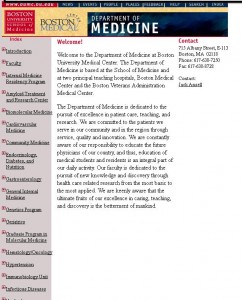All universities and teaching hospitals are feeling the need to assess their effectiveness. The move to accountability is partly motivated by increased competition for limited funds. A department that can demonstrate its positive impact stands a better chance at attracting faculty, trainees, and public support.
One extreme example of this move to measure productivity is a faculty “balance sheet” issued by Texas A & M University. As reported in the Wall Street Journal, the Chancellor’s office has tallied up all the income a faculty member generates through tuition and grants and then subtracted his or her expenses in salary and benefits. The results are not so predictable. The history department ends up with a $4.6 million surplus, but the Aerospace Engineering department reports a loss of $1.4 million.
Texas also mandates further transparency by requiring all academic departments to post their budgets and student evaluations just three clicks away from the university’s home page. Having access to raw data, though, may not help answer whether public funding is achieving desirable goals. The faculty accounting does not take into account teaching that takes place outside the classroom or allow for periods where faculty are coming up with innovative ideas that will garner future funding. Holding higher education accountable is not objectionable; what is short-sighted is measuring faculty contributions solely in dollars and cents.

